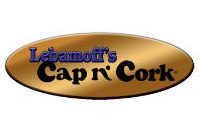Google Maps for Inside Your Warehouse: Wishful Thinking or Forward Thinking?
 Magstar recently had the pleasure of attending an educational seminar being put on by one of our partners, Zebra Technology. As attendees entered the room, they were handed a small unmarked box that fit into the palm of a hand: but what was it?
Magstar recently had the pleasure of attending an educational seminar being put on by one of our partners, Zebra Technology. As attendees entered the room, they were handed a small unmarked box that fit into the palm of a hand: but what was it?
Everybody came in and sat down and unboxed their prizes, and Zebra explained what the smooth, futuristic looking little triangles were: portable, reassignable RFID tags.
These tags, they explained, acted as a kind of GPS tracker. By downloading an app on a smartphone and connecting the tag to it, you could look up in a map view where that tag was. They talked about the personal use cases: some of the Zebra employees involved in testing them put them on their key rings and then never had problems finding their keys again. Another confessed that he left it in his car, so that when he parked in large unfamiliar lots it was effortless to locate his vehicle after several hours of shopping. Stories of attaching it to kids at the playground or the collars of beloved pets sprung up, offering the promise of peace of mind as well as practicality.
So where do the business use cases come in?
Magstar brought the knowledge back from this seminar and got to talking to clients about the potential uses for this sort of thing, and it all came back to one exciting notion: in-warehouse and in-transit tracking of item location and moment. “That would make it so much easier to find that particular vintage we need tucked away somewhere in our warehouse,” enthused one of our wine and spirits clients, envisioning the possibilities. “To have my staff just pull out their phone, identify the product they’re looking for, and then have it pop up on a map of the warehouse – that would make everything so much more efficient.”
The other advantage of this method of organization is that the location is always accurate, because there’s no manual process involved in notifying the system when something has moved or where it’s been put away: with the Zebra tracker attached to the skid or carton, it’s constantly live-streaming its whereabouts to whatever devices you’re using to manage the warehouse.
Another practical element of this evolution in RFID technology is that the tags themselves essentially act like keychains. They’re multi-use, which means when an item is sent to a store location it can be scanned to determine that it arrived, detached from the product, and sent back to be reassigned to a different product and reused. One of the reasons RFID hasn’t caught on for this kind of use (except in the case of some big national retailers with deep pockets and lots of product to move) is the cost involved in a single-use, throwaway tag. These long-lasting, robust Zebra tags look like they may be able to entice retailers to try something new and exciting without having to invest quite as much money into it.
Once the first use cases of companies employing this technology in their warehouses start to roll out, it’s entirely possible that midsized retailers will be able to affordably follow suit and add a sort of ‘Google Maps’ style of instant item tracking to their warehouse management technology. It’s an interesting new development and certainly one to keep an eye on.
RECENT POSTS
 Cap N’ Cork Implements Magstar Total Retail Software to Manage Its 15 StoresMagstar Inc. is proud to announce that Cap N’ [...]
Cap N’ Cork Implements Magstar Total Retail Software to Manage Its 15 StoresMagstar Inc. is proud to announce that Cap N’ [...] 14 Trends Driving Disruption in Retail in 2017Is 2017 the year when brick-and-mortar stores get completely [...]
14 Trends Driving Disruption in Retail in 2017Is 2017 the year when brick-and-mortar stores get completely [...] 3 Big Data Retail Trends Your Business Should EmbraceIt's hard to know when "reaching for the stars" [...]
3 Big Data Retail Trends Your Business Should EmbraceIt's hard to know when "reaching for the stars" [...]